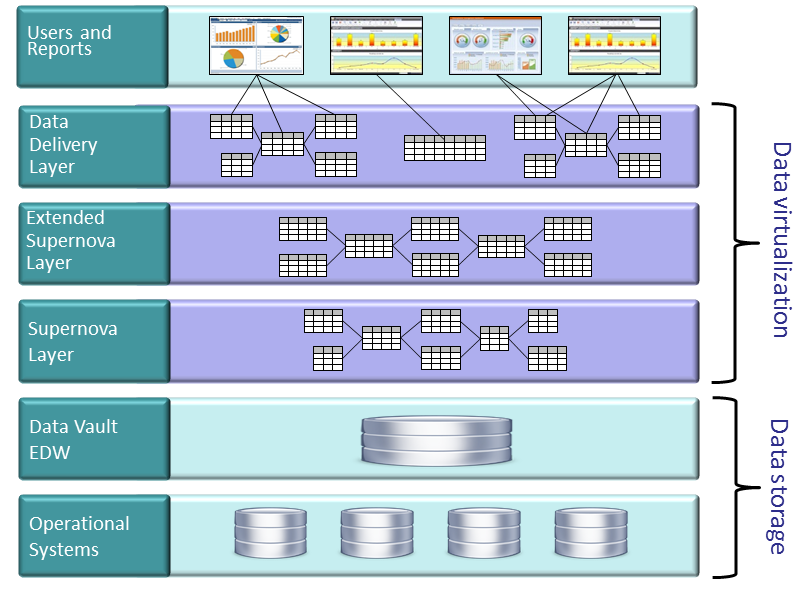|
Contact |
|
R20/Consultancy |
|
+31 252-514080 |
Title: Data Vault + Data Virtualization = Double Flexibility
Abstract: Modelling and developing data warehouses using the Data Vault approach leads to highly flexible and integrated data structures on an enterprise scale and helps to manage full compliancy in data warehouses. New data and relation needs can be added easily without impacting the existing data and relations. All the data that is directly derived from the data vault and used in data marts, star schemes and even semantic layers and reports, can be reconstructed anytime for compliancy purposes. Unfortunately, there is a problem. As the data vault structures are not intended to be used directly for reporting and analytics, many organizations have to develop a myriad of products like data marts, cubes, and other derived data stores to organize the data in a more practical structure, ready for reporting and analysis. However, all these derived data stores lead to a maintenance nightmare. In this session an approach and solution is described to use the Data Vault approach and still have flexibility on the reporting side-no need to create derived data stores. This lowers operational costs and improves flexibility, it makes it easier to change existing reports. The approach leans heavily on data virtualization technology.
For more detailed information on this approach, see the following whitepaper:
The SuperNova Overall Architecture:


